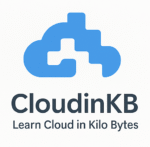How to Build Event-Driven Apps Using AWS S3, Lambda & SNS
Automate real-time notifications with a flexible serverless workflow Introduction Event-driven architectures allow cloud systems to react to changes with minimal delay. Among AWS’s serverless tools, combining S3, Lambda, and SNS is a powerful and widely used pattern for building scalable, automated workflows. In this blog, I’ll walk you through setting up this workflow and share a globally […]
How to Build Event-Driven Apps Using AWS S3, Lambda & SNS Read More »
